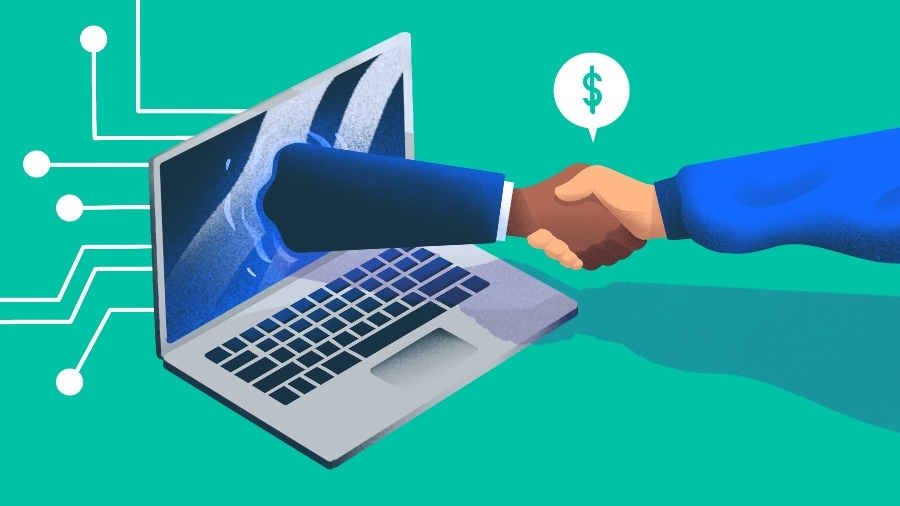Editor’s note: This is Mergers & Money, a monthly column by Senior Reporter Chris Metinko that covers dealmaking in the enterprise tech space.
As the chip shortage continues to disrupt different sectors—perhaps most notably automotive—investors have flooded money into the design and processing of chips at a never-before-seen rate.
Subscribe to the Crunchbase Daily
This rush to invest also comes at the same time more tech giants have unveiled plans to design their own chips—something that likely is not a coincidence.
While venture funding for U.S.-based companies connected to the semiconductor industry shattered its previous record back in April–after Palo Alto, California-based hardware and integrated systems developer SambaNova Systems closed a $676 million Series D at a $5 billion-plus valuation—global funding set new highs last month, according to Crunchbase data.

In August, total venture dollars poured into the sectors surpassed last year’s record of $3.4 billion. Semiconductor companies, which can run the gamut from chipmakers to design firms to hardware developers, now have raked in more than $3.7 billion in 85 deals to date this year.

Both U.S. and global investment took their biggest investment strides in the second quarter, with each seeing $1.1 billion and nearly $1.7 billion invested, respectively.
The tie-up
Not much of that may come as a surprise to those who follow the news. The current chip shortage has rankled many industries, as more connected devices and emerging sectors like robotics mean an increase in demand for chips. Add on top of that the current COVID-19 pandemic wreaking havoc on many supply chains.
There are also traditional industries that never needed chips before but now—in a connected society—need them just as much as a smartphone or laptop maker. The automotive industry provides a perfect illustration of that. Just last week, consulting firm AlixPartners estimated that the shortage will cost the industry $210 billion globally in lost revenue this year, up from its estimate in May of $110 billion.
Concerns in that industry caused the White House to hold a meeting last Thursday with large car manufacturers, tech companies and chipmakers to discuss the situation.
Big tech looks to chips
But that current investment also comes as the largest tech companies in the world all have made news in recent months about designing their own chips. That began last year when Apple announced its new M1 chips for its devices.
Since that announcement, others have joined the party to design their own chips. In March, it was reported that Amazon is developing its own networking chip. And last month, Tesla unveiled chips it had designed at its AI Day for its new high-speed computer, Dojo.
Just this month, reports emerged that Google is getting close to rolling out its own processor for its smartphones and Chromebooks.
That’s to say nothing of other companies such as Facebook, which spoke of its interest in designing its own chips more than two years ago, and could be interested in its application for its much ballyhooed virtual reality plans.
Dealmaking
Investors undoubtedly see the opportunity in the current chip shortage but, just as assuredly, venture capitalists see the plans of these large tech firms and the possible big M&A exits that could await some of these recently funded companies.
The money flooding into the semiconductor industry right now is not to build new, modern foundries—which takes years and billions of dollars—but is more focused on chip design, as the industry strives for more optimized chips. That also is exactly what these large technology companies are looking for: New and better-designed chips that can cut down on the amount of chips needed, the power they use, and possibly ease some of the tension currently on the supply chain.
So far this year, nearly a dozen venture-backed semiconductor companies have been bought, with the most notable deal easily being Qualcomm’s acquisition of Santa Clara, California-based Nuvia for $1.4 billion in January. While the number of deals is still relatively small when compared to other big tech sectors, it already represents the most in any year since 2017, which witnessed 14.
None of this is to say Apple, Amazon and Facebook will start buying up chip designers and processor developers next week, but investors look for optionality of exits when putting money down. The semiconductor space likely has felt that on the negative side for years, with companies in the sector seeing a lack of interest from the public market and only so many strategic buyers on the older chip landscape.
Now with so many of the big tech players joining that realm and eyeing a chip all their own, VC’s seem to be putting their money exactly where they believe many of these companies will too.
Methodology
Semiconductors funding numbers include pre-seed, seed and all venture rounds.
Illustration: Dom Guzman

Stay up to date with recent funding rounds, acquisitions, and more with the Crunchbase Daily.


![Illustration of a map to an Exit. [Dom Guzman]](https://news.crunchbase.com/wp-content/uploads/Exit-map-470x352.jpg)

![Money - Illustration of a giant piggybank with a woman looking at it. [Dom Guzman]](https://news.crunchbase.com/wp-content/uploads/Big_Piggy_Bank-470x352.jpg)
![Illustration of a guy watering plants with a blocked hose - Global [Dom Guzman]](https://news.crunchbase.com/wp-content/uploads/quarterly-global-3-300x168.jpg)
67.1K Followers